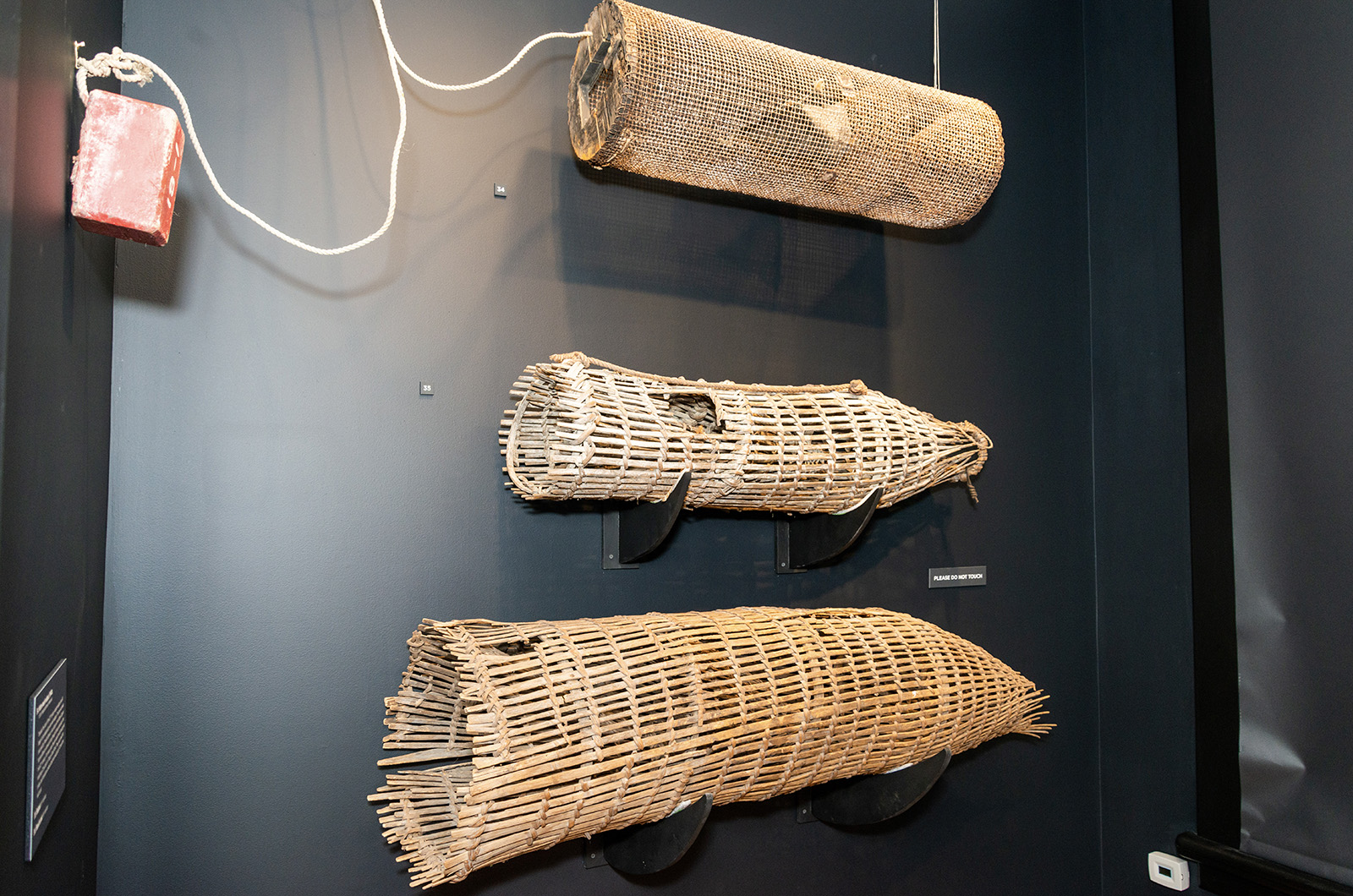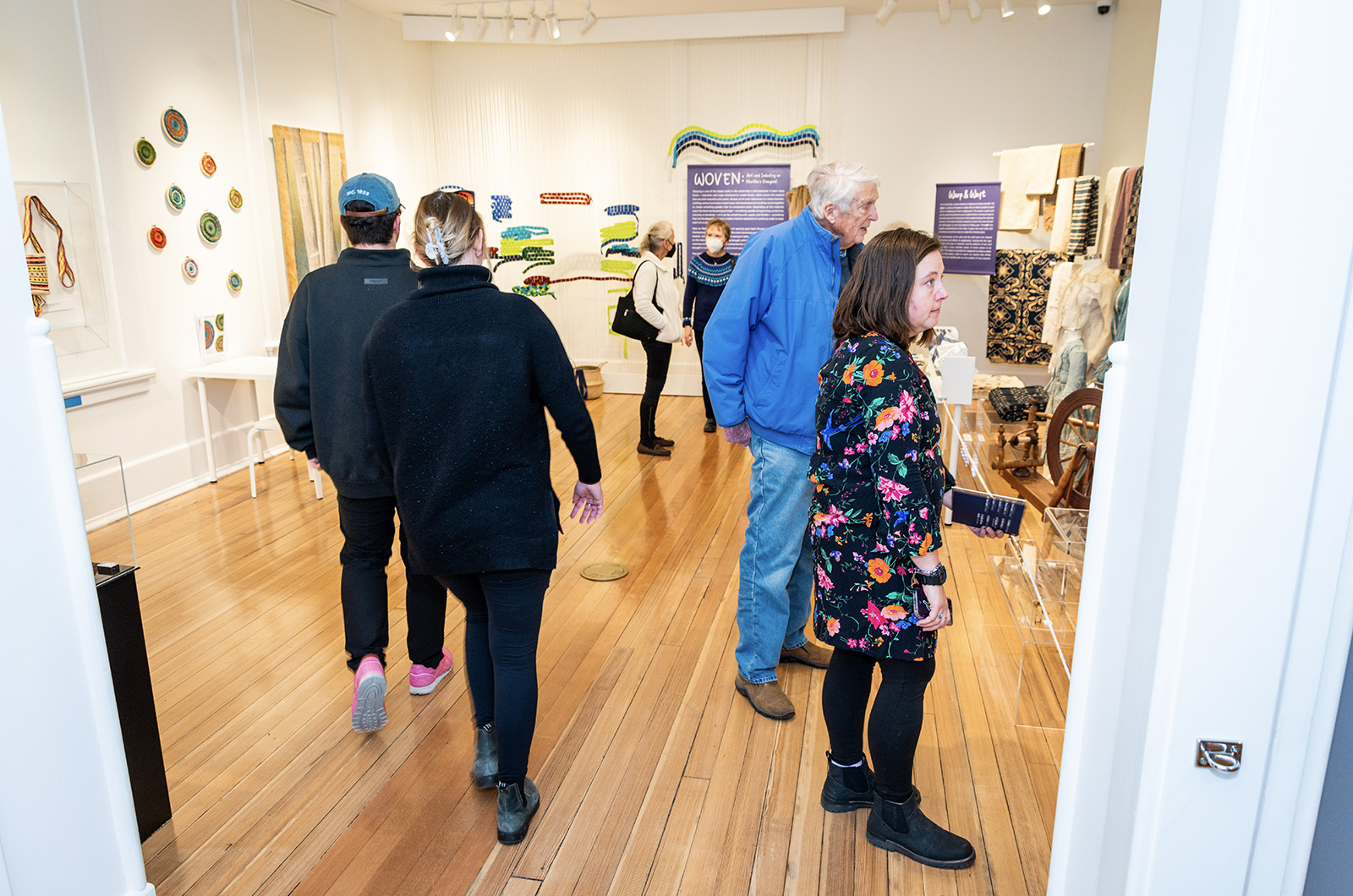Before the days of fast fashion and mass importation, the creation of textiles and woven vessels was an Islandwide effort. Woven, a new exhibit at the Martha’s Vineyard Museum, explores this era by inviting people to share in the historic craft and hear the stories of early Island basket weavers, seamstresses and eel trappers.
The history of weaving dates back thousands of years on Martha’s Vineyard. The practice was an integral part of Wampanoag craftsmanship, being used to create items such as belts, jewelry and floor mats. When European settlers arrived to the Island in the 17th century, they brought new styles of weaving and connected the community to a larger off-Island trade network.
The exhibit, which opened late last month and is on display through May 14, has both pre- and post-colonial woven pieces as well as artwork and machinery from the museum collection, local artists and the Martha’s Vineyard Garden Club. Some pieces date as far back as the 1700s.
“With this exhibit we really are exploring a medium,” said Kate Logue, the museum’s associate curator of exhibitions. “We wanted to give people an opportunity to try it themselves, with all of the interactives and hands-on things and for them to explore its intersection with the Island’s history.”
In between history lessons on the Vineyard’s early fashion and fabrics, visitors can weave strips of fleece into a large tapestry model or try their hand at basketmaking. Woven was originally set to debut in 2020 and was postponed by the pandemic. Ms. Logue is relieved that the museum is finally able to share it in its full interactive nature.
The basis of all weaving is an interaction between warp and weft, explained Ms. Logue. Warp describes the vertically-stretched material that’s held on a loom. Weft is the material that is pulled horizontally in an over-under motion through the warp, eventually forming the woven structure.
“For a long time, textiles were among some of the most valuable goods you might have,” said Ms. Logue. “They were listed in wills and inventories because they were one of the big ticket items in your household.”
Because of the price, it was common for families to reuse fabrics even after holes, tears or stains formed. One might have turned an old bedsheet into an apron or napkins before finally throwing it out.
“It wasn’t like fast fashion now where something gets one hole and into the trash it goes,” said Ms. Logue.
The exhibit also features three woven eel pots. The carefully-crafted traps were made by fishermen using wooden slats and pine roots entwined together to create a large bottle shape that worked best for catching eel in the spring and fall months.
Ms. Logue explained that the overall theme of the show is functional beauty.
“We thought a lot about how something woven can be both useful and beautiful,” she said. “Something can keep you warm at night and also look gorgeous while doing it.”








Comments
Comment policy »